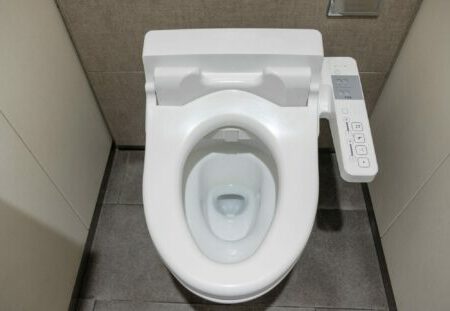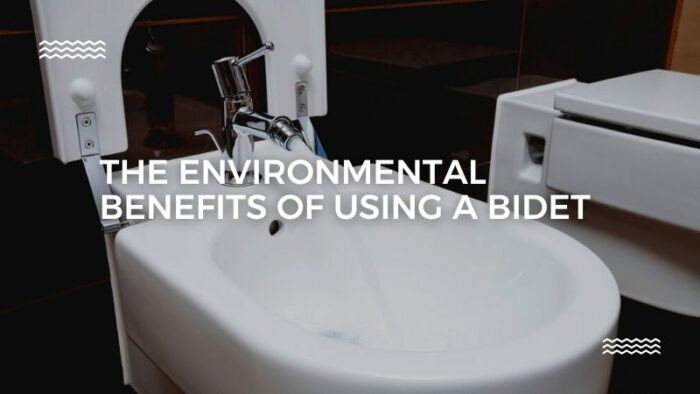Using a bidet can be good for the environment in several ways. First, it can reduce the amount of toilet paper that people use. Toilet paper production requires a lot of energy and water, generating greenhouse gas emissions. Using a bidet, people can significantly reduce their toilet paper consumption, leading to a lower environmental impact.
Second, bidets can help to conserve water. Toilet flushing accounts for a significant portion of water use in many households, and using a bidet can reduce the amount of water needed for flushing. In addition, many modern bidets have a feature that allows users to adjust the water pressure, which can further conserve water.
Finally, bidets can reduce the amount of sewage and waste in landfills or treatment facilities. When people use toilet paper, it can become stuck in the pipes and cause clogs.
This can lead to costly repairs and contribute to sewage overflow, which can have negative environmental impacts. By using a bidet, people can avoid these issues and help to reduce the strain on sewage treatment facilities. Using a bidet can be good for the environment by reducing the consumption of resources such as water and toilet paper, as well as helping to reduce the amount of waste in landfills and sewage treatment facilities.
How Much Toilet Paper Waste Does a Bidet Remove?
Using a bidet can significantly reduce the amount of toilet paper people use. Some estimates suggest that using a bidet can reduce toilet paper consumption by up to 75%. This can be especially beneficial for households that use toilet paper, as reducing toilet paper use can significantly decrease waste.
One of the main reasons that using a bidet can reduce toilet paper waste is because it provides a more thorough and effective means of cleaning after using the bathroom. Instead of relying on toilet paper to wipe, a bidet uses water to clean the genitals and anus. This can effectively remove waste and reduce the need for additional toilet paper.
It’s important to note that while using a bidet can significantly reduce the amount of toilet paper waste, it is not a completely waste-free solution. Some people may still choose to use a small amount of toilet paper to pat dry after using the bidet, and bidets also require energy and water to operate. However, the reduction in toilet paper use can still lead to a significant decrease in waste.

Bidets Help to Conserve Water
Bidets can help to conserve water in a few different ways. One of the main ways is by reducing the amount of water needed for toilet flushing. Toilet flushing is a significant source of water use in many households, and using a bidet can reduce the amount of water required for flushing. This is because a bidet provides a more thorough and effective means of cleaning after using the bathroom, which can reduce the need for multiple flushes to remove waste.
Another way that bidets can help to conserve water is by offering a feature that allows users to adjust the water pressure. Many modern bidets have a water pressure control feature that allows users to adjust the water flow to their preferred level. This can help conserve water by allowing users to customize their water based on their needs.
Using a bidet can also help conserve water by reducing the amount of sewage and waste in landfills or treatment facilities. When people use toilet paper, it can become stuck in the pipes and cause clogs.
This can lead to costly repairs and contribute to sewage overflow, which can have negative environmental impacts. By using a bidet, people can avoid these issues and help to reduce the strain on sewage treatment facilities.
Using a bidet can help conserve water by reducing the water needed for toilet flushing, offering a water pressure control feature, and helping to reduce the amount of waste in sewage treatment facilities.
Bidets Reduce the Amount of Waste In Landfills
Using a bidet can help reduce the amount of sewage and waste in landfills or treatment facilities in several ways. One way is by reducing the amount of toilet paper that people use.
When people use toilet paper, it can become stuck in the pipes and cause clogs. This can lead to costly repairs and contribute to sewage overflow, which can have negative environmental impacts. By using a bidet, people can avoid these issues and help to reduce the strain on sewage treatment facilities.
Another way that bidets can help to reduce waste is by providing a more effective means of cleaning after using the bathroom. A bidet uses a stream of water to clean the genitals and anus, which can be more effective at removing waste and reducing the need for additional toilet paper. This can help to reduce the amount of waste that ends up in sewage treatment facilities.
Conclusion
Using a bidet can be good for the environment in several ways. It can reduce the amount of toilet paper people use, leading to a lower environmental impact due to the energy and water required to produce toilet paper and the greenhouse gas emissions it generates. Bidets can also help conserve water by reducing the water needed for toilet flushing and offering a water pressure control feature.
Finally, using a bidet can reduce the amount of sewage and waste in landfills or treatment facilities by avoiding clogs and providing a more effective means of cleaning. Overall, using a bidet can be an environmentally-friendly option for personal hygiene.

